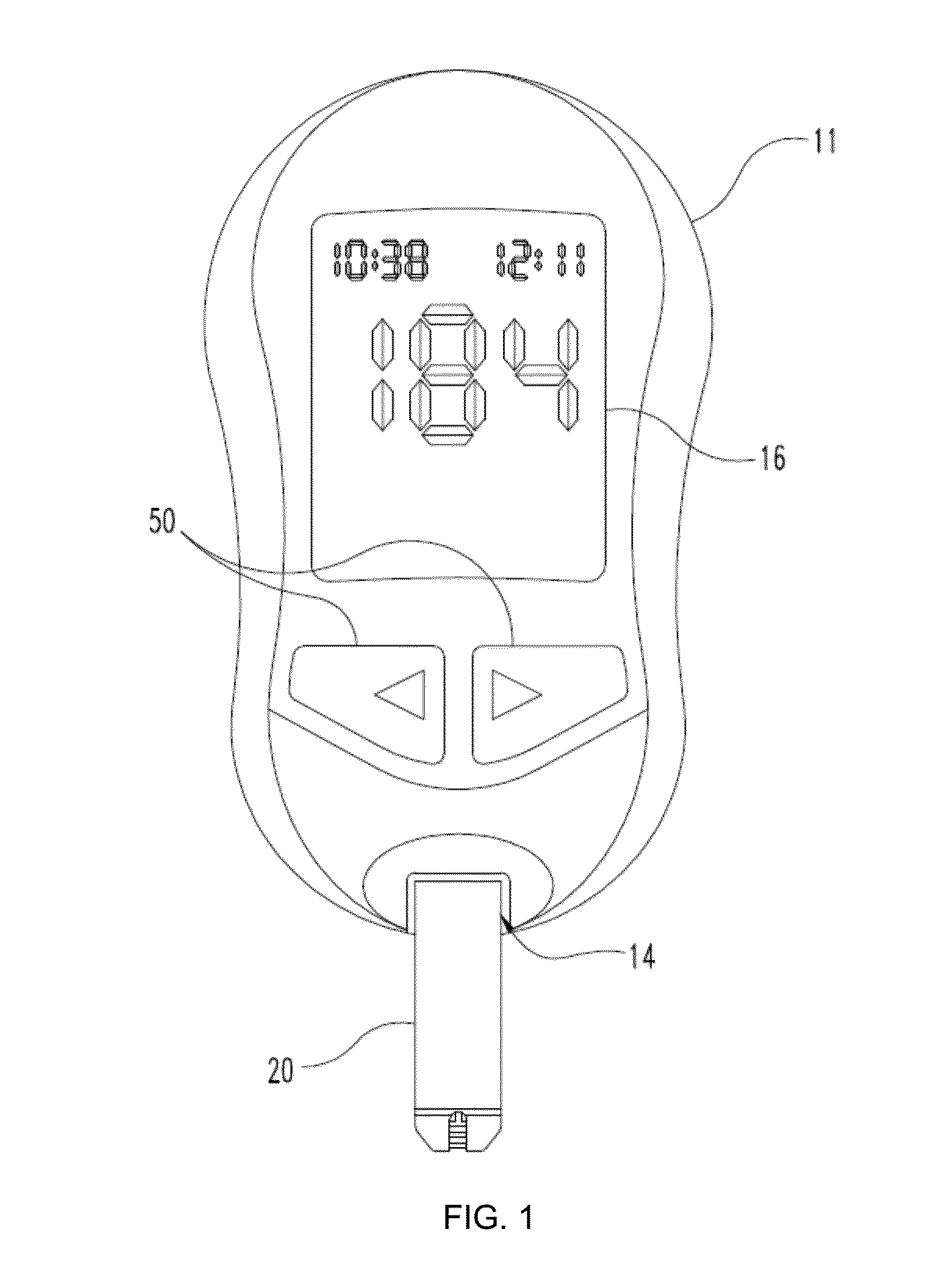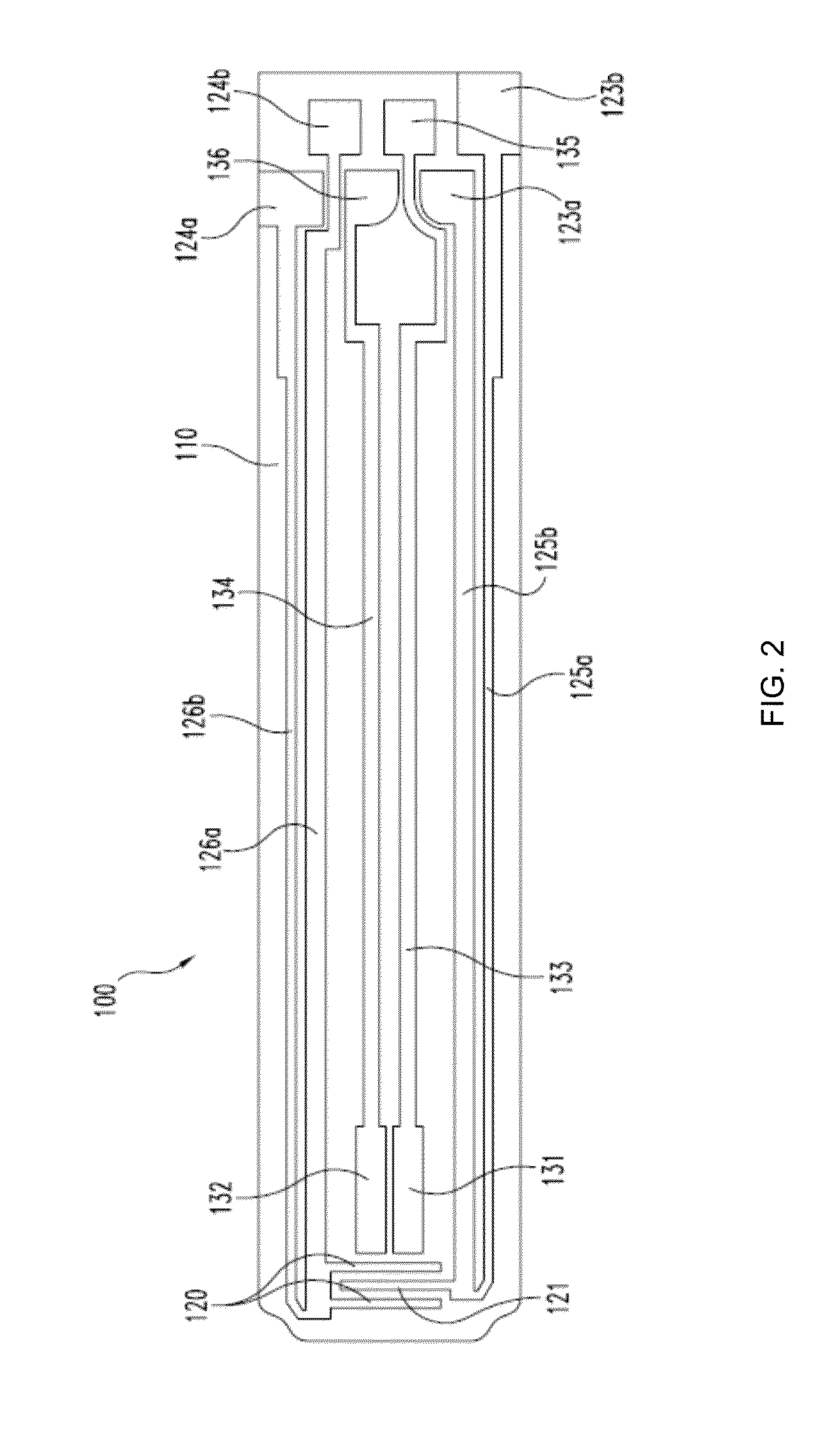Methods of scaling data used to construct biosensor algorithms as well as devices, apparatuses and systems incorporating the same
a biosensor and algorithm technology, applied in the field of mathematical and medical science, can solve problems such as deviation from the “true” glucose concentration, and achieve the effect of reducing the impact of confounding variables
- Summary
- Abstract
- Description
- Claims
- Application Information
AI Technical Summary
Benefits of technology
Problems solved by technology
Method used
Image
Examples
example 1
The Rsolution Scaling Method
[0110]This example shows results of the first exemplary scaling method as shown in FIGS. 5A-C, which depict Nyquist plots for a large dataset of glycolized venous blood samples produced with an experimental design in which glucose, Hct and temperature were systematically co-varied. The dataset also contained spiked plasma samples at three different salt levels. These results are from a large dataset of glycolized venous blood samples with co-varied glucose, Hct and temperature levels combined with nominal spiked plasma samples containing different levels of salt.
[0111]FIG. 5A shows complex AC responses in spectral order and represents low-to-high Hct levels. One set of responses corresponds to the plasma samples with different salt concentrations. Using the methods described above and shown in FIG. 4, an estimate of Rsolution was obtained for each sample and then subtracted from each of the observed values of real impedance.
[0112]The Rsolution compensated...
example 2
The Factor Scaling Method
[0117]A second exemplary scaling method is based upon a direct scaling of DC current measurements using the admittance at 20 kHz. FIG. 7 shows a relationship between a given DC current value and the measured admittance at 20 kHz (Y20). As described above, the measured Y20 is dependent upon both Hct level and temperature. Due to the impact of Hct and temperature, a given DC magnitude can correspond to more than one glucose level. The second exemplary scaling method therefore is based upon computing a new angle, θ, formed between a selected DC current value and the corresponding Y20 for the same sample. The value of θ is calculated according to the following equation:
θ=arctan(DC / Y20).
[0118]The second exemplary scaling method produces a situation in which θ is “orthogonal” to the Y20, as seen in FIG. 8, thereby seeking to minimize the impacts of Hct and temperature in the new variable. This impact is minimized because the surface generated by θ, Y20, and glucos...
example 3
The “Power” Scaling Method
[0119]A third scaling method is based upon the scaling of a DC current value by a Y20 raised to an optimized power, where the power term ranges typically from 0 to 10. This scaling method can be performed in accordance with the following equation:
scaled DC=DC / Y20optimized power.
[0120]The rationale behind this approach is that both DC and Y20 are dependent on Hct and temperature, while only DC is dependent on glucose concentration in the test sample. By scaling DC current with Y20, adjusted with certain power, Hct- and temperature-dependence can thus be removed from DC while glucose dependence is still preserved.
[0121]The power term is optimized through Pearson correlation score as shown in FIGS. 9-10. The power has been iterated between 0 and 10. DC3533 (the DC current measured at 3.533 seconds after sample sufficiency) was used in demonstrating this method. At each chosen power, a Pearson correlation was calculated between the scaled DC current and one of ...
PUM
| Property | Measurement | Unit |
|---|---|---|
| frequencies | aaaaa | aaaaa |
| frequencies | aaaaa | aaaaa |
| frequencies | aaaaa | aaaaa |
Abstract
Description
Claims
Application Information
 Login to View More
Login to View More - R&D
- Intellectual Property
- Life Sciences
- Materials
- Tech Scout
- Unparalleled Data Quality
- Higher Quality Content
- 60% Fewer Hallucinations
Browse by: Latest US Patents, China's latest patents, Technical Efficacy Thesaurus, Application Domain, Technology Topic, Popular Technical Reports.
© 2025 PatSnap. All rights reserved.Legal|Privacy policy|Modern Slavery Act Transparency Statement|Sitemap|About US| Contact US: help@patsnap.com



